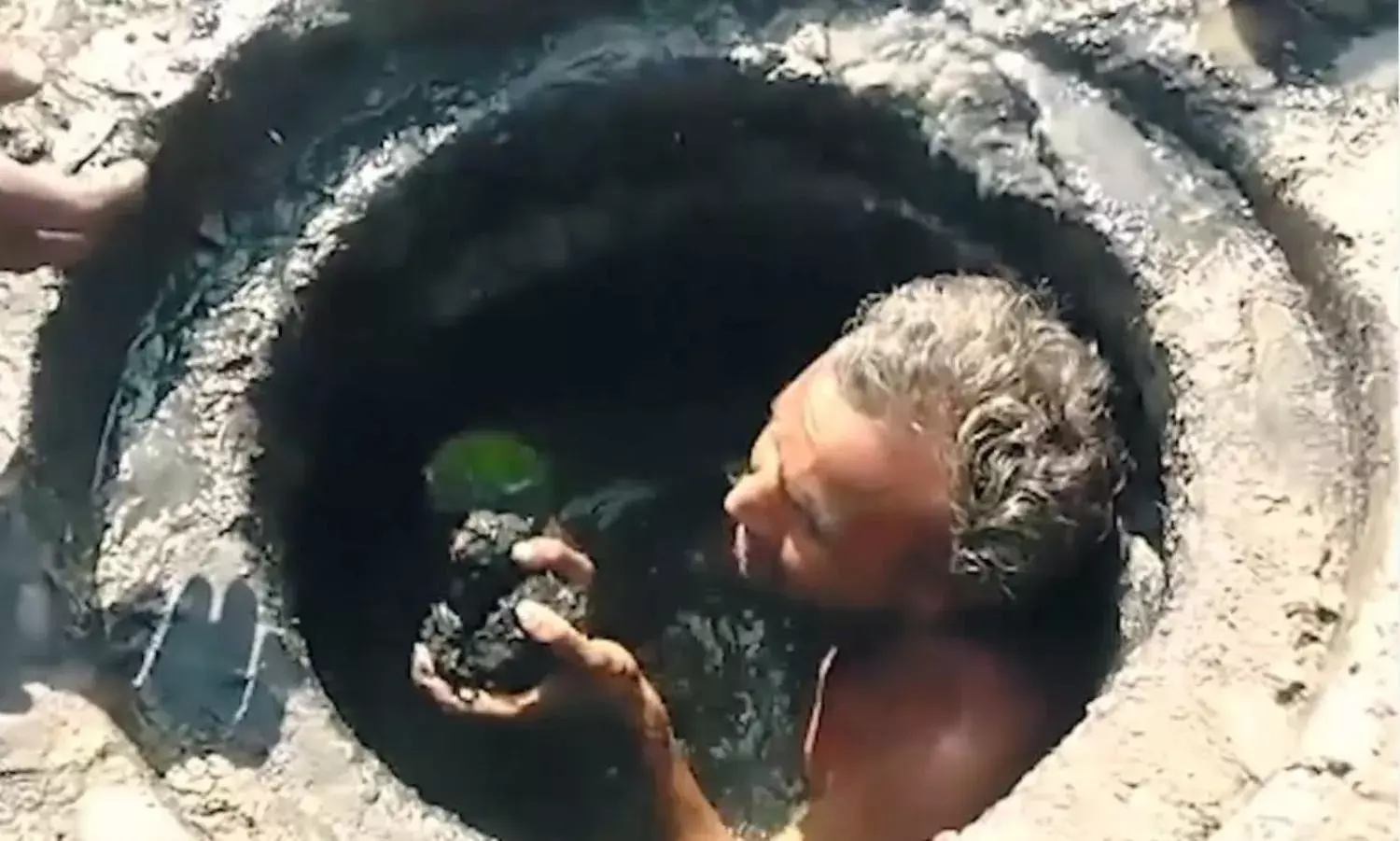'The Last Man' Documents the Plight of India’s Most Downtrodden
Manual Scavenging

Every other day there are reports of sanitation workers dying in sewers across the country. Manual scavenging remains a reality even as there are claims to the contrary.
‘The Last Man’ is a film that showcases the plight of Dalits engaged in such vocations in Gujarat, a state which is peddled as a ‘Model State’ for the rest of the country to emulate.
It requires grit and guts for the viewer to sit through the film, based as it is on reality. And leaves little to the imagination as it seeks to bring home to the viewer the challenges manual scavangers face to eke a livelihood.
“We have released the trailer and are looking for an international platform to release this film. I think that the world needs to know what is happening to their fellow human beings here. My whole contention is that the seven lakh manual scavengers who have been identified can easily be rehabilitated in a country that can erect statues worth thousands of crores,” Dakxin Chhara, the maker of this film, told The Citizen.
“I made this film over two months - December and January - recently and the post production exercise was completed by early April. I am saying this because people need to know that the content of the film does not belong to a bygone era but is a hard reality about what is going on even today. I want to draw attention to those who take away animal carcasses from our doorsteps for disposal,” Chhara added.
“Do we even know how these carcasses are disposed off and what is the threat to the health of the people who perform these tasks? Do the Doms even know what burning 30 to 40 dead bodies everyday means for their own body? Many of them say that this is the task assigned to them for centuries and the belief gets emboldened by the story of King Harishchandra that has been narrated to them generation after generation. But it is well established that this is the outcome of a caste design and now it is high time that we go beyond this systematic design and talk about it,” he said.
Chhara and his friends pooled in their resources to make this film, an act of passion and commitment. The film begins with a template that reads, “In March 2014, the Supreme Court of India declared that there were 96 lakh (9.6 million) dry latrines being manually emptied but the exact number of manual scavengers is disputed – official figures put it at less than 7,00,000.”
The film shows various facets of the miserable lives of Dalits. One of the aspects that has is graphic in its impact, is of the Dalit women going from house to house begging for leftover food. This is a throw back to the iconic work ‘Joothan’ by late Om Prakash Valmiki. In one of the many interactions I had with him during my stint in Dehradun, he said, “Begging for leftovers is the most demeaning job for any human being. It puts one below the category of animals.”
The film also carries an interview of one Sunil Yadav as he narrates how he had to carry out his job as a sanitation worker even as he cleared his M.Phil. There were efforts to dissuade him from taking the entrance exam and admission in TISS, Mumbai. “For three semesters I used to attend classes in the day and move on to do my job in the night. They denied me the legally mandated study leave. I was told that who would do the sanitation job if I went on leave,” he says, pointing out how the concept of purity and pollution has continued to play out in society for centuries.
“Our children are never taught about handling dirt. They are told that it is someone else’s job,” he adds. In Himachal Pradesh last year some right wing elements demanded that Valmiki’s ‘Joothan’ should be removed from the syllabus as it allegedly created social discord.
There are layers and layers of falsehood that the film unravels. It outlines at length how the provisions of the Prohibition of Employment as Manual Scavengers and Their Rehabilitation Act, 2013 are being violated with impunity when it comes to compensating those dying in manholes. It shows how such deaths are made out to be ‘accidents’ without holding those responsible for them accountable.
The message has been put out very effectively when a clip of the nation celebrating the launch of an indigenous satellite which is the hallmark of India’s scientific development is juxtaposed with a shot of a youth coming out of a stinking manhole.
The film is successful in driving home the message that education is the only means to come out of this drudgery. Yadav comments, “Education is the sharpest weapon that we have and we have to make the best use of it.”
The movie features a couple where a retired man helps his wife clean public toilets. Chhara has brought out the story of this couple elaborately. He accompanied the couple to their home and talked to their grandchildren on why the couple has to perform the task and why they do not want to take up the job. One of the grandchildren Tara Parmar who is around 10 years of age is the most vocal and clear in her mind as she says, “They have to do this because they are not educated.” It ends on a note when this young girl promises to convey this to the topmost political functionary in the government when she gets educated and becomes successful.
“I want to revisit this girl a few years down the line to see whether her thoughts and resolve change as she grows up,” Chhara said.



